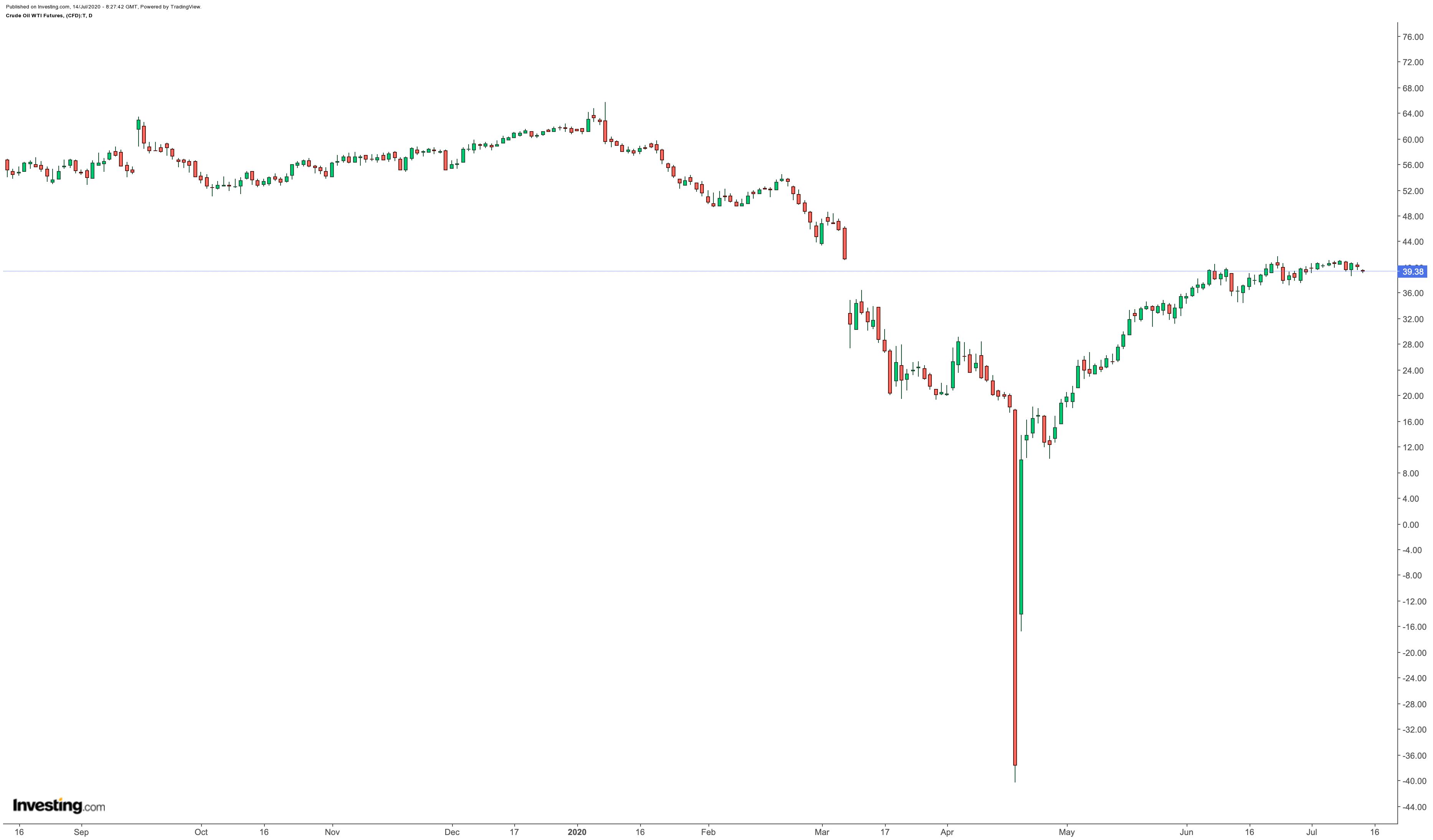The Saudis are going to do what they’re going to do with their oil—nothing stopped them the last four months and nothing probably will now. Crude prices actually jumped 300% through the worst pandemic in history, as Riyadh stuck to its guns and demanded compliance with a deal to restrict output. But now, as the OPEC group led by the kingdom mulls its first production hike in months, the market is already wobbling on fears of a new glut.
Hence, the question: will the Saudis be able to pull a rabbit out of a hat to keep oil supported when the Organization of the Petroleum Exporting Countries and their allies meet Wednesday? The group is scheduled to discuss tempering output cuts that brought the market back from sub-zero levels registered in late April.

Jim Krane and Mark Finley, two experts on oil and fellows at Rice University’s Baker Institute, suggested in a Forbes op-ed on Tuesday that they might wait out the so-called Joint Ministerial Monitoring Committee of the OPEC+ alliance, rather than bet against the Saudis.
OPEC In Fighting Form
“OPEC is in fighting form these days,” the two academics noted.
“Since the disastrous Saudi-Russia price war was called off after five weeks, the cartel has not only righted its own ship, defying yet another round of commentary about its demise, but seems to have fixed global oil markets in the midst of an unprecedented demand collapse—just in time for OPEC’s 60th birthday.”
The authors wrote that once recalcitrant OPEC members “have suddenly found religion”—i.e. “over-complying” on production cuts, either of their own accord, or being beaten into submission to do so. These have enabled Saudi Arabia and other Gulf nations in the group to collectively deliver a million barrels per day less than their quotas.
Compliance from among the various participants with the commitment to jointly cut 9.7 million barrels per day was at 108% in June, creating bullish enough sentiment for OPEC to set its basket price for crude at $43 per barrel, they noted.
“It’s almost as if Saudi Arabia says, ‘Jump!’ and the rest of OPEC+ responds, ‘How high?’” they added.
On Tuesday, oil prices were down by more than 1%, extending a similar decline on Monday.
US benchmark WTI crude futures were down by 1.5% at $39.52 per barrel, while Brent crude, the global benchmark, slid 1.2% to $42.20.
Cumulative Losses In Oil Can Sometimes Be Recouped in Days
As noted in past weeks, cumulative losses of 3% to 5% can be recouped in just two straight sessions, despite reports of COVID-19 raging anew and threatening the emergence of the US economy from lockdowns.
“The OPEC monitoring committee has a tough decision to make regarding recommending the extension for the headline production cuts,” said Jeffrey Halley, senior market analyst at New York-based OANDA.
“Renewed lockdowns in the US will almost certainly hit oil consumption, and the sideways price action by oil over the past month suggests that we are at equilibrium levels for now."
"Assuming they can get the OPEC+ buy-in, erring on the side of caution might be the sensible decision.”
However, he added that OPEC members and their allies would realize the difficulty in weaning themselves off artificial price supports, if those were left in place too long.
As a final measure, the fate of oil prices “will be mostly decided by events in other asset classes,” Halley said—a reference to how a largely positive Wall Street had owned the action across markets, week after week, despite the new wave of COVID-19 infections and deaths across the United States.
Other analysts are less concerned about OPEC+ bringing supply back. “Our balances show hefty deficits in the third and fourth quarters, even with a tapering,” Bob McNally, founder of consultant Rapidan Energy Group, told Bloomberg. “I think the market will handle it pretty well.”
If demand continues to increase, the “call on OPEC” will “surge massively” in the second half of the year, Commerzbank said in a note on Monday:
“The oil market is thus heading for a clear supply deficit, which is why OPEC+ is likely on Wednesday to decide to gradually withdraw the record-high production cuts by 2 million barrels per day—as planned—from August.”
OPEC’s near-term success in market management faces numerous roadblocks, including—if prices continue to rise—the revival of US shale production.
The current OPEC+ cuts are noteworthy, Krane and Finley pointed out in their Forbes piece.
“Like every cartel, the OPEC/OPEC+ group has historically struggled with enforcement and free riders,” the two academics argued. “Has Saudi Arabia finally found the ‘secret sauce?’ Or will today’s discipline—driven by the biggest-ever plunge in oil demand—fade alongside the virus? Too early to say.”
Will US Shale Boom Again To OPEC’s Detriment?
But Nick Cunningham, an independent oil analyst blogging on Oilprice.com, said a comeback in US shale production may not be as large as feared.
In the past, any tightening up of the oil market simply created more room for aggressive shale drilling, Cunningham wrote, but the US rig count has lately remained at historic lows, despite crude coming back to $40 from minus levels
”As steep decline rates take hold, it appears unlikely that US production will come back in any significant way this year, or next,” he surmised.
That could be the magic rabbit the Saudis are looking for.
Disclaimer: Barani Krishnan does not own or hold a position in the commodities or securities he writes about.
